Nikon D850 Review
Is this still the most versatile professional DSLR ever made?
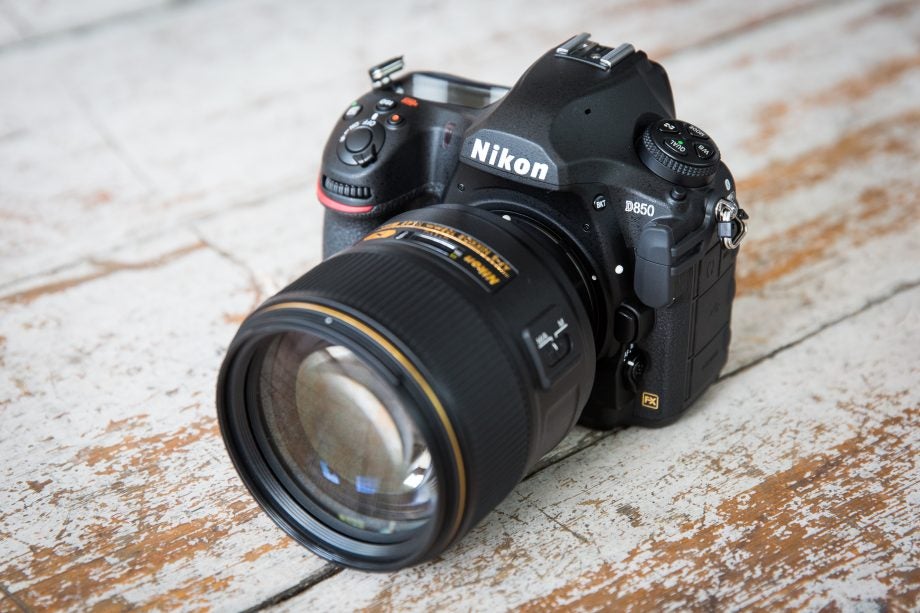
Verdict
What is the Nikon D850?
Nikon’s D850 was a real game-changer when it was announced in July 2017.
The big surprise was not just the resolution, but the D850’s continuous shooting capabilities and increased ISO range. Before the D850, it was generally assumed that you had to choose either high resolution or high shooting speed in a professional camera, since the huge amounts of data generated by high-resolution sensors took too much processing power for fast burst rates.
But the D850 dispelled this theory overnight, offering an impressive 7fps continuous shooting speed as standard, boosted to a scarcely credible 9fps with Nikon’s optional MB-D18 battery grip. It offers a pretty good buffer capacity too, though for long-burst raw file capture you’re still better off with a high-speed specialist like the Nikon D5.
This combination of resolution and high-speed shooting has since been repeated by the Sony A7R III and Nikon Z7, but the D850’s performance remains eye-opening even now.
The D850’s specifications appear to suit practically any subject type or shooting situation, and while a couple of later mirrorless rivals now edge ahead slightly in speed, Nikon’s powerhouse of a DSLR is still in the top echelon of professional full frame cameras.
Frankly, it doesn’t have a whole lot of competition in the DSLR market. Canon has not yet shown any sign of updating or replacing its 50-megapixel EOS 5DS and 5DS R, launched way back in 2015, and the only camera to beat the D850’s resolution, the Pentax K-1 Mark II, is a perfectly decent camera, but does not attempt to match either the D850’s speed or resolution.
Instead, the D850’s challengers have come from the mirrorless market, including the Sony A7R III, with almost the same resolution and faster shooting speeds, and Nikon’s own 45.7-megapixel mirrorless Z7.
So has the D850 still got what it takes to fend off the competition, and is it still the ground-breaking that amazed us all when it was launched?
Related: Best cameras
Nikon D850 – Features
The Nikon D850 has a 45.7-megapixel full-frame (FX-format) CMOS sensor not previously seen in any other camera. Like many other later Nikon models it does not have an optical low pass filter. This means there is some theoretical risk of moiré effects in fine patterns and textures, but the payback is extra-sharp fine detail rendition.
This sensor also features gapless on-chip micro-lenses, with the latest back-illuminated design to maximise its light-gathering capabilities. In effect, the sensor’s layout is reversed so that the wiring is behind the light receptors rather than in front, and no longer obstructs any light. The effect can be sen in the D850’s wider ISO range – its predecessor, the D810, had a native ISO range of 64-12,800 (expandable to ISO 32-51,200), but the D850 offers ISO 64-25,600, expandable to ISO 32-102,400. Normally, higher resolution brings a lower maximum ISO range, but the D850’s sensor offers an improvement in both respects.
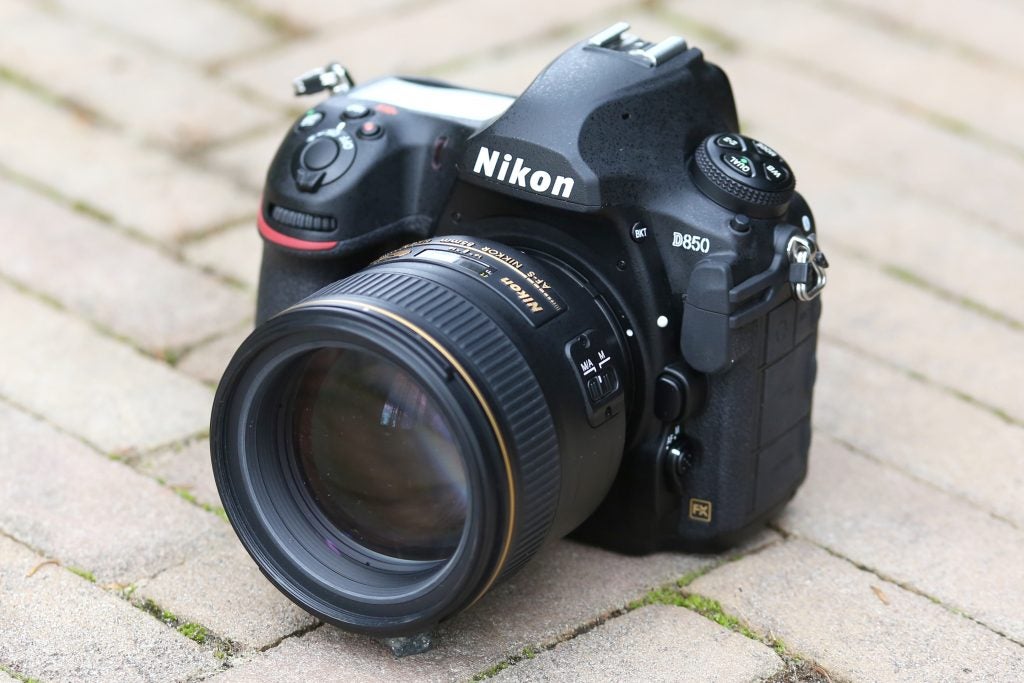
In the D850, Nikon uses the same Expeed 5 image processor as its flagship D5, which helps achieve the healthy 7fps continuous shooting speed, and 9fps with the MB-D18 grip – though this is an extra £369/$397 and you’ll need a EN-EL18 high-power battery on top of that to achieve those frame rates. Confusingly, these have been made available in ‘a’, ‘b’ and ‘c’ variants. The current EN-EL18c costs £189/$155.
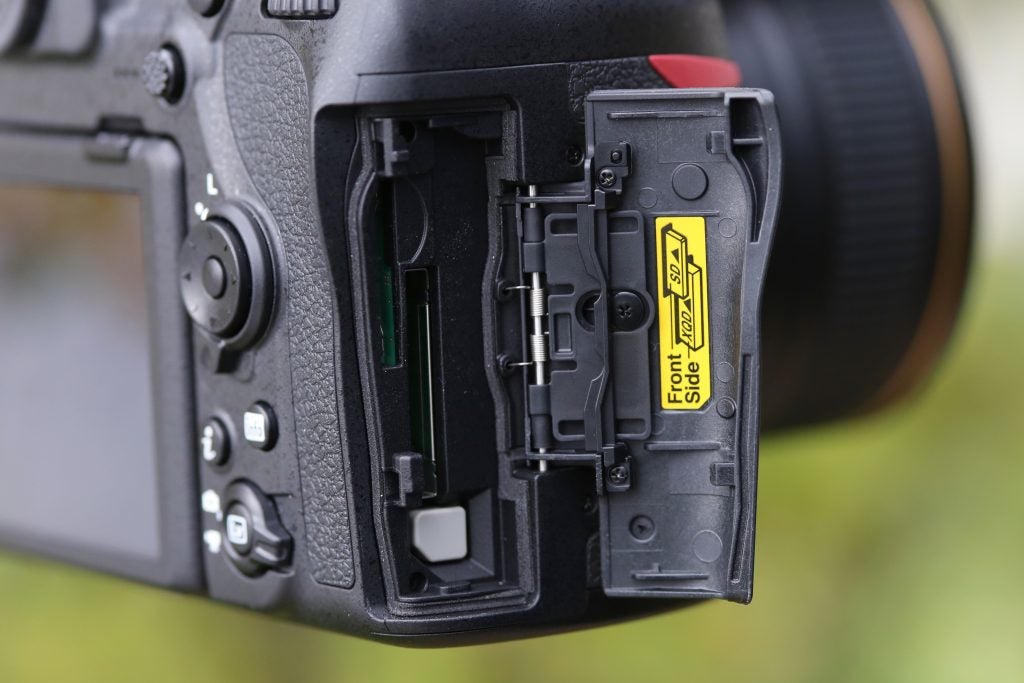
Running at 7fps the D850 offers a 51-frame raw buffer. That’s very good for a camera with this resolution, if not quite up to the standard of the Nikon D5. It has both an XQD card slot and a UHS-II compatible SD card slot, so it offers potentially very fast data capture for sports and action photographers.
The D850 also inherits Nikon’s best autofocus system – again lifted directly from the D5. It has 153 focus points (55 of these are user-selectable), including 99 of the more accurate cross-type AF sensors, and 15 that will work with lens and teleconverter combinations with an aperture of f/8. The centre point is sensitive to -4EV, and the rest to -3EV, allowing the camera to focus quickly in low light.
Autofocus modes include auto area, 3D colour tracking, single point AF and the option to select the number of continuous (AF-C) focus points from a group of 9, 25, 72 or 153. In Live View, there’s a new pinpoint AF mode that’s designed to ease precise focusing on smaller subjects in the frame, but the key point here is that the D850 still relies entirely on slower contrast detection for autofocus. The on-chip phase-detection sensor used in the Nikon Z7 was still a long way off when the D850 was designed.
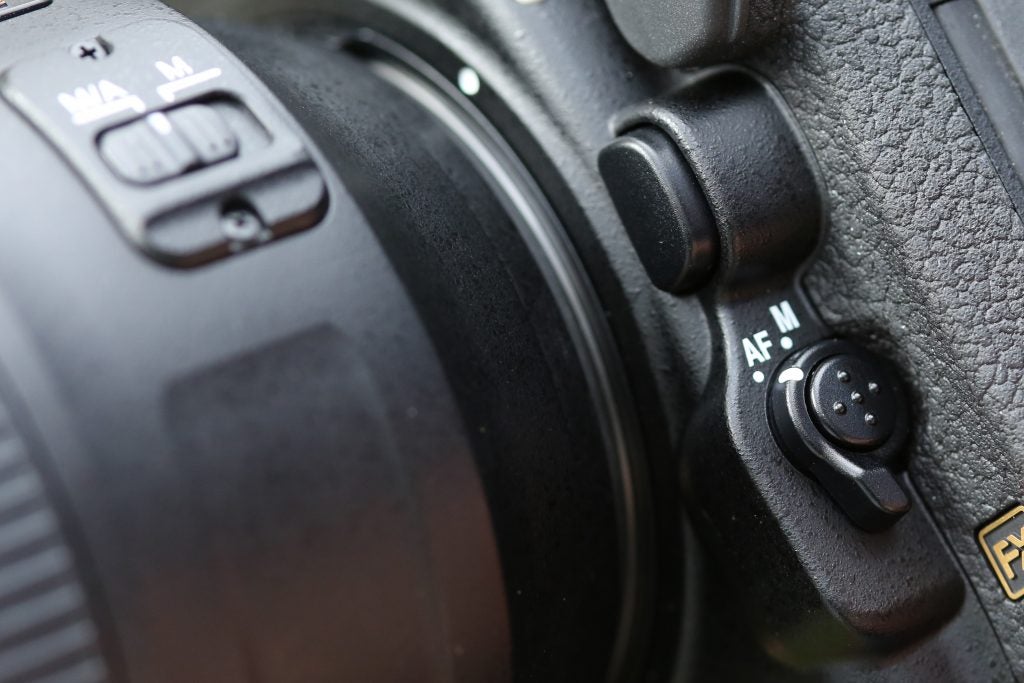
Exposure metering is handled by Nikon’s highly-capable 180,000-pixel RGB sensor – yet another feature inherited from the D5. It doesn’t just handle exposure, though, as it’s also used for subject-recognition and face-detection, and this information is fed back to the autofocus system for accurate and precise subject tracking.
The D850’s Raw files are, predictably, huge. Even a compressed 14-bit Raw file takes up 43.8MB, and this rises to 51.6MB for a lossless compressed file. An uncompressed Raw file is 92MB.
Nikon has added two reduced image size options when shooting in Raw or JPEG. Change the image size from large to medium and the D850 will record 25.6-megapixel files (6192 x 4128 pixels), with the small setting reducing the resolution to 11.4-megapixel files (4128 x 2752 pixels). It’s unlikely you’ll buy a camera with this resolution and then immediately reduced it, but Nikon has pointed to the value of smaller raw files for stop-motion animators, for example.
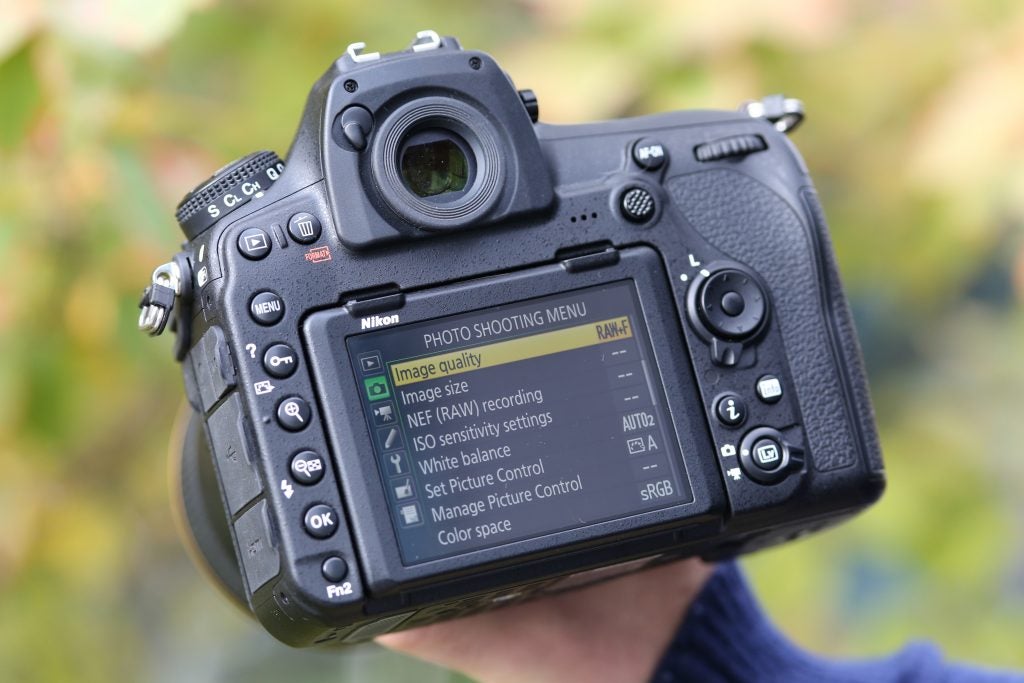
Like other full-frame Nikon DSLRs, the D850 has a DX Crop mode. This is automatically selected by the camera when a DX lens is attached, but can be set manually with FX lenses when you need to extend the reach of telephoto lenses (the usual reason for using an APS-C DX format Nikon body alongside a full-frame model). It may use a smaller area of the D850’s sensor, but the DX crop mode still produces a resolution of19.4 megapixels with an image size of 5408 x 3600 pixels. This isn’t so very different to the 20.9-megapixel resolution produced by the DX-format Nikon D7500 and D500.
Videographers have plenty to smile about too. When it was launched, the Nikon D850 was the DSLR with everything, including in-camera 4K recording at 30fps using the full width of the sensor – which means that there’s no crop factor in the 4K video mode (unlike the competing Canon EOS 5D IV, for example) and your wide-angle lenses stay wide-angle.
You can also capture 4K time-lapse movies in-camera, but not 8K time-lapse movies. Creating these needs third-party software, so although Nikon touted 8K time-lapse movies as a feature when the camera was being launched, it would be more accurate to say the camera has a built-in intervalometer.
Videographers will also be pleased to receive aids such as a peaking display for accurate manual focus, and zebra patterns to help avoid overexposure. Both microphone and headphone sockets are built in and are located above the USB and Type-C HDMI interfaces.
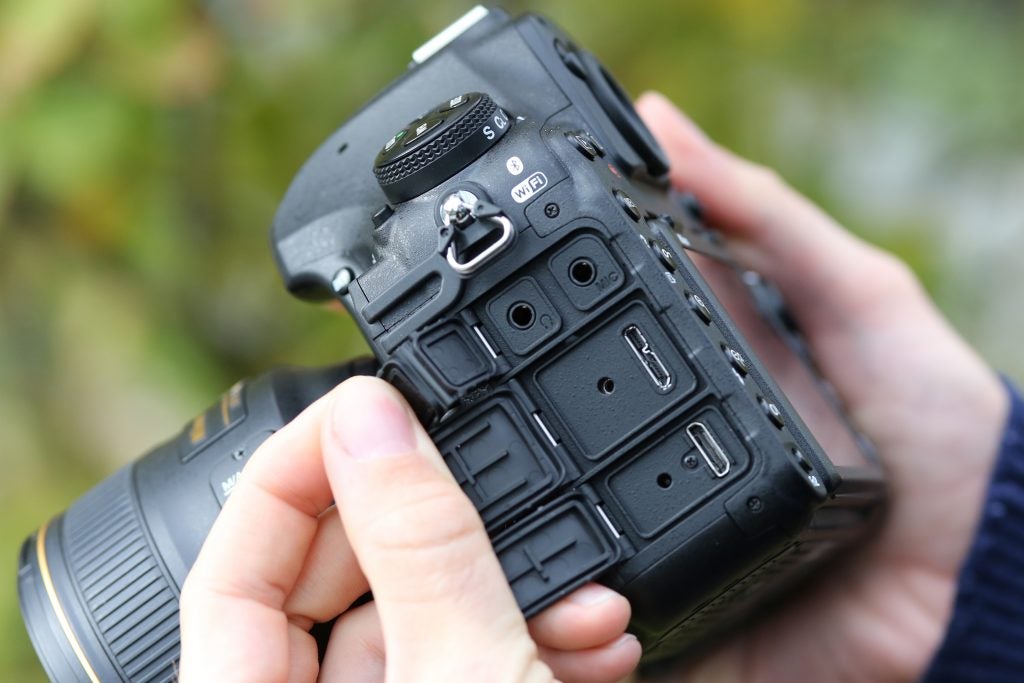
The impressive list of features with a new in-camera focus bracketing mode to create extended depth-of-field composites (focus stacking), as well as a new Natural Light Auto White Balance option, which promises optimal results in outdoor lighting.
On the back, the D850 has the largest optical viewfinder so far on a Nikon DSLR, with a 0.75x magnification, and below this is a high resolution 2.36m-dot tilting LCD. It’s similar to the screen on the Nikon D500 and offers touch control of menu navigation, image browsing in playback mode and AF point positioning in Live View.
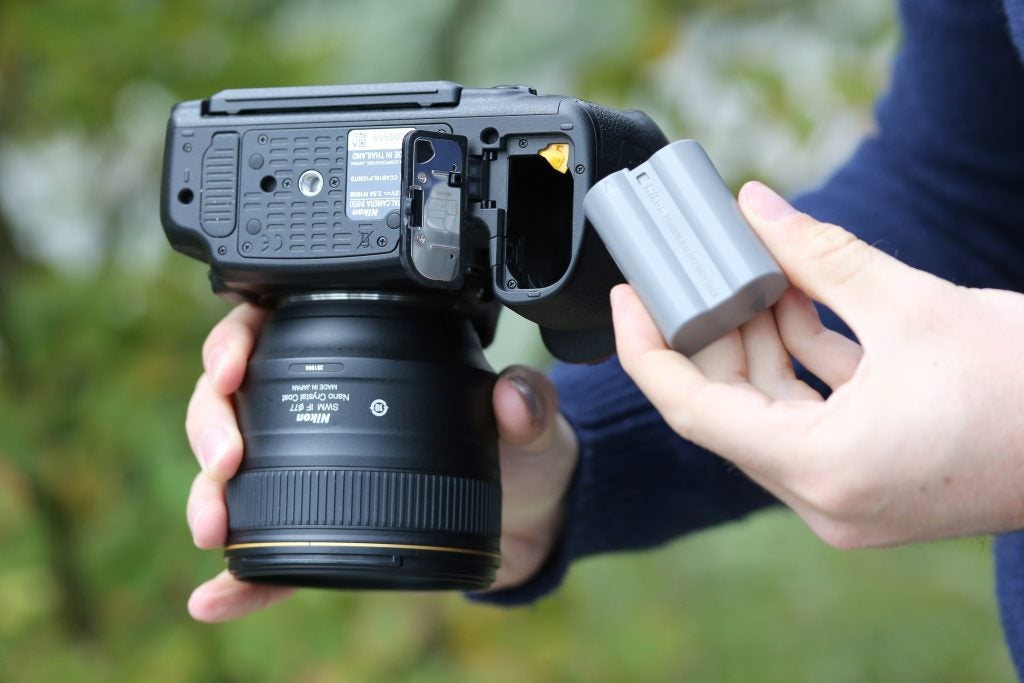
The camera is powered by Nikon’s familiar EN-EL15 battery, but what’s particularly impressive here is that it can be used to shoot 1840 shots on a single charge – a big jump from the 1200-shot stamina of the Nikon D810.
Nikon uses its now-familiar SnapBridge connectivity for wireless image transfer to mobile devices. Images can be transferred as you shoot, and selecting the all-important down-sampling 2-megapixel mode rapidly speeds up transfer times and saves on valuable storage space.
Nikon D850 – Body and design
Nikon has once again produced an incredibly strong camera that feels superbly constructed, albeit with a few subtle body changes over the D810. Professional full-frame DSLRs have to be built like tanks if they’re to be robust enough to put up with the rigours of daily use, and the D850 is no exception.
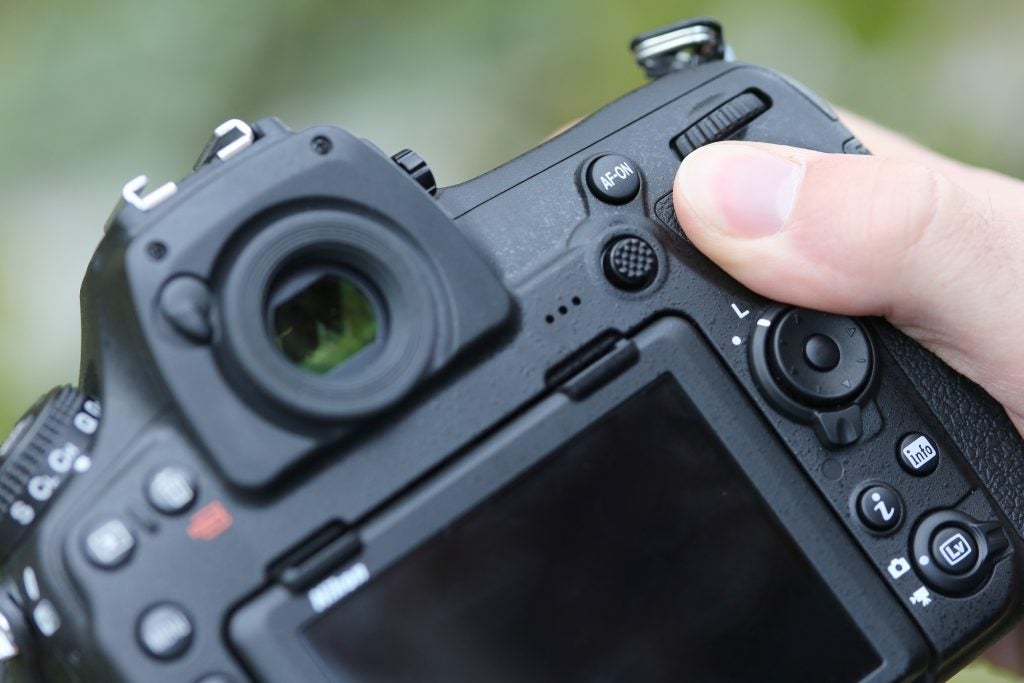
The camera is built around a magnesium alloy chassis for strength and rigidity, and it’s fully sealed against moisture, dust and dirt. There’s no pop-up flash, however. This was useful on the D810 for triggering other flashes remotely, but D850 users will have to rely on external Speedlights or remote flash trigger add-ons instead. That’s pretty standard for pro-level cameras these days.
From the front, the D850 doesn’t appear all that different from the D810. When you get it in your hands, though, you’ll notice that the grip has been reworked and made a fraction deeper. It’s fine for even the largest of hands and leaves your index finger resting comfortably on the shutter release.
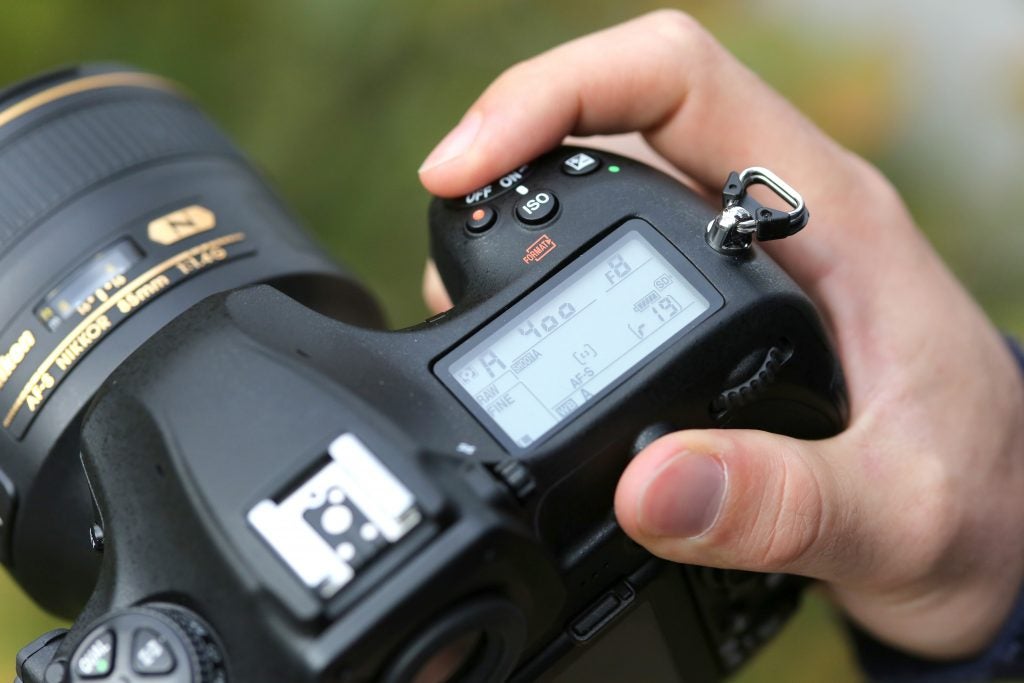
Comfort and a good feel are key factors for any serious photographer who will often spend hours at a time with camera in hand. It’s here that the D850 really excels, to the point I’d say it’s one of the most comfortable pro DSLRs I’ve used over prolonged spells of shooting.
Spin the camera round in your hands and you’ll find every inch of the body is covered in buttons, dials or connector ports, with sufficient dedicated controls to change every key shooting setting without needing to access the menus. In terms of button layout, there are a few nice touches. For example, there’s a new joystick that falls naturally under your thumb for shifting the focus point around the frame on the fly. It’s faster than using the four-way controller and its knurled texture helps you identify it from the AF-ON button.
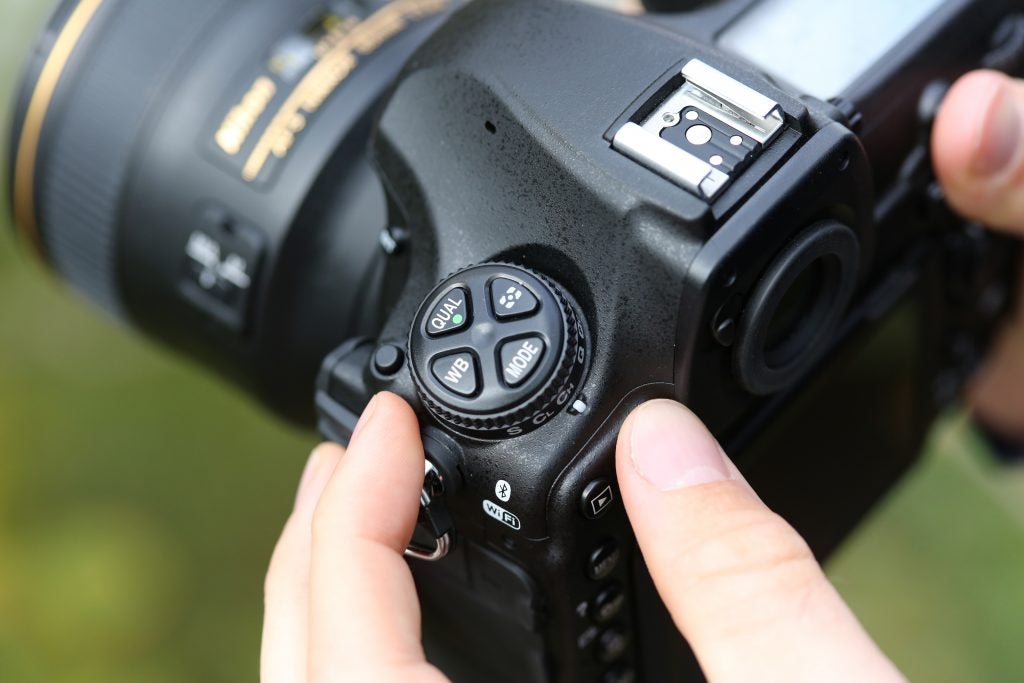
Nikon’s decision to put the ISO button above the drive mode dial on the D810 was always a curious one, so it’s good to see this being exchanged with the mode button. In use it means sensitivity can now be changed without having to pull your eye away from the viewfinder.
The control layout remains very ‘Nikon’. Unlike most DSLR and mirrorless models, the D850 dispenses with a regular mode dial. Instead, you change the exposure mode via a single button on the stacked control cluster on the left side of the top plate. This is where you’ll also find buttons for the image quality setting, white balance and metering mode. Underneath is a release (drive) mode dial which you can only turn when you press a locking button alongside.
At the rear you get the usual menu, lock, playback zoom and OK buttons parallel to the left of the screen, but there’s also a new customisable Fn2 button in the bottom corner that’s brilliant for rating images in playback. It can also be setup to access My Menu and toggle between stills and movie shooting info in Live View. The integrated Live View button and stills/movie switch has shifted down and the info button is useful for viewing key exposure settings on-screen.
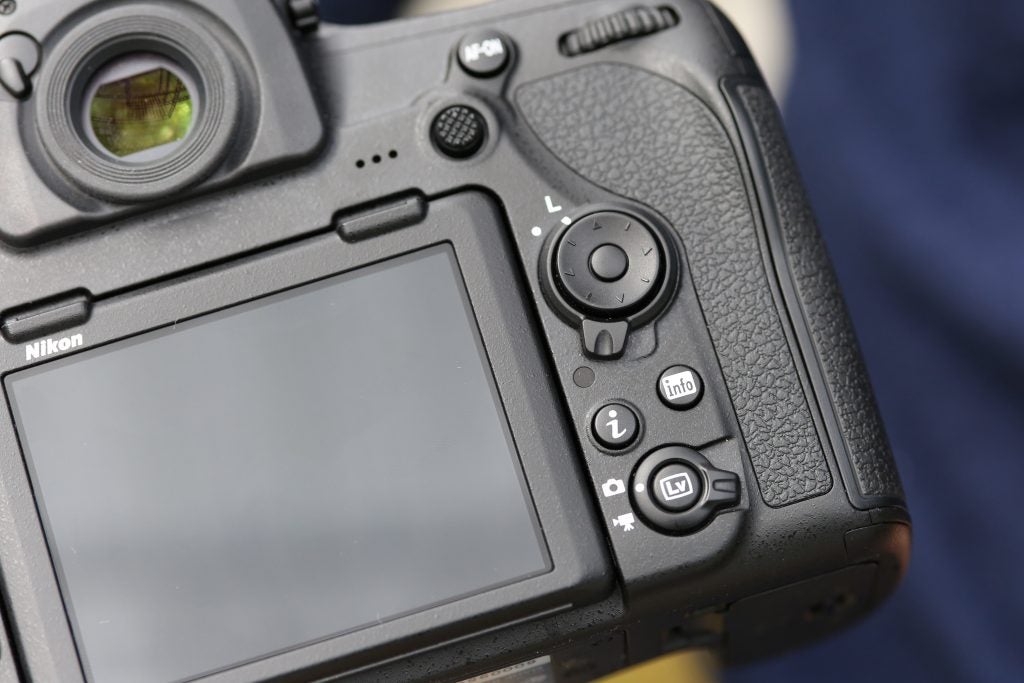
Nikon users coming from the D800, D800E or D810 will quickly become familiar with the changes to the body. It should also be said that other Nikon users coming from less advanced APS-C models shouldn’t find the D850 bewildering, and can use their good knowledge of Nikon’s menu system to setup and navigate the camera easily.
The D850 has a few other nice touches. Flicking the on/off switch to its bulb position illuminates not just the top-plate LCD but also many of the buttons across the body, which be really useful when shooting in the dark. In addition, there’s a clever folding port cover that allows you to keep the headphone socket fully protected from the elements when a microphone is plugged in.
Nikon D850 – Silent shooting
Nikon has added ‘Quiet’ modes in the past to suppress mirror slap and the noise of the focal plane shutter, and the D850 offers two Quiet modes, one for single-shot photography and one for shooting continuously at 3fps.
But these only suppress the sound of the shutter and can’t eliminate it completely. To get round this, Nikon has introduced a silent, zero-vibration electronic shutter that enables users to capture images in complete silence when using Live View. Mode 1 offers silent shooting at 6fps at full resolution including Raw, whereas Mode 2 rattles out 8-megapixel shots at 30fps in the JPEG format only.
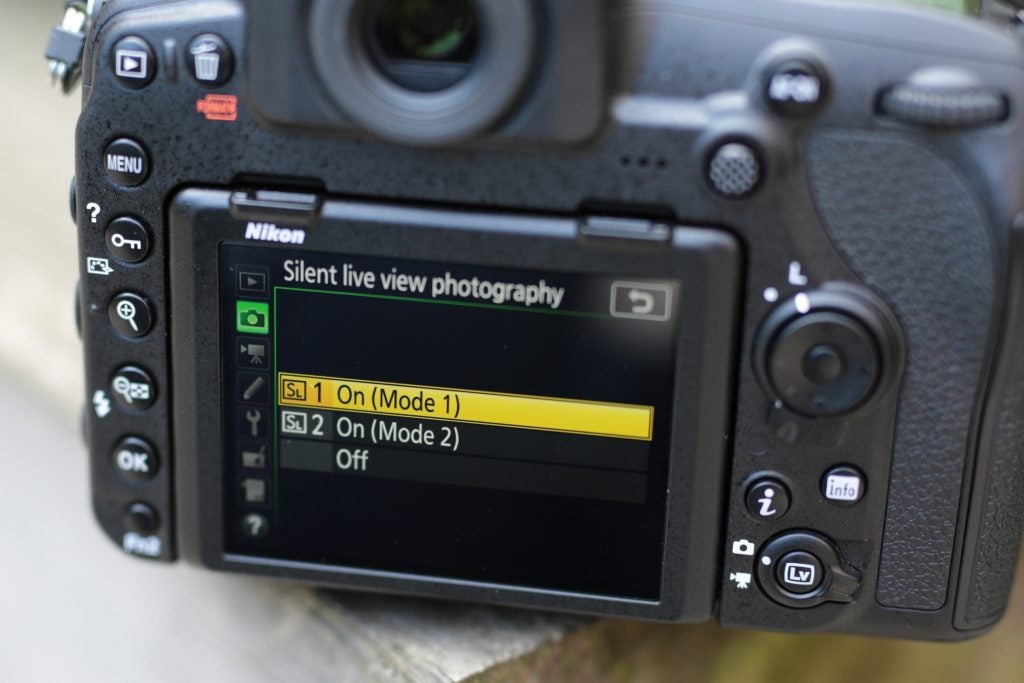
This new way of shooting will be perfect for wedding and wildlife photographers who are often at risk of frightening or disturbing their subjects in quiet environments, but it’s easy to see the potential for theatre photography and many sports where key moments require absolute quiet – such as golf swings or tennis serves.
I tested both modes at a church wedding, and those around me were completely oblivious to the fact I was capturing images throughout the service. It’s a boon for those times when you want to be discreet and work under the radar.
Nikon D850 – Viewfinder and screen
One of the constraints of the Nikon D810 was that it had a fixed screen, so it’s good to finally see Nikon embracing a tilting touchscreen on one of its high-resolution pro-spec DSLRs.
It’s essentially the same 2.36m-dot LCD that you get on the Nikon D500. It tilts up and down for waist-level shooting, but isn’t as ingenious as the sideways-tilting screen you get on the Fujifilm X-T3, the scissor-action design of the Pentax K-1 II‘s screen, or the fully-articulating screen on the Canon EOS 6D Mark II. The D850’s screen and its single-axis tilt constrains you to shooting in landscape rather than portrait format too.
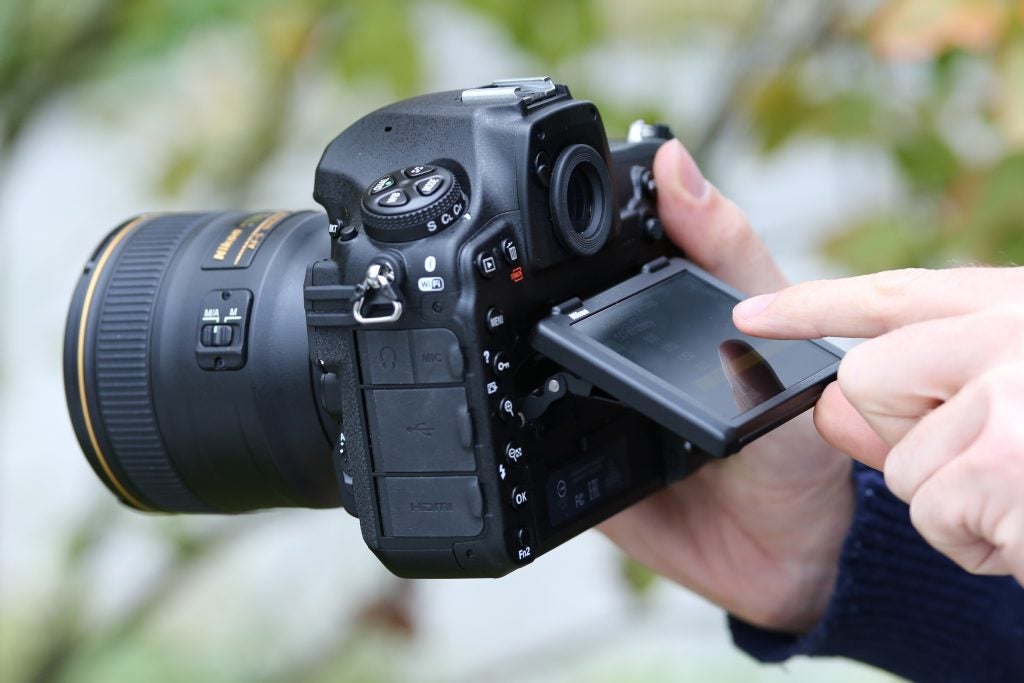
The angle of tilt is particularly good for low- and high-angle shooting. It goes one better than the D500’s screen, too, in the way the touchscreen can now be used to browse menus and change menu settings. You can’t change exposure variables from the info display or Live View screen, but it still offers a big step in the right direction. It’s also incredibly sensitive and precise to the touch, rivalling the response of Canon’s superb touchscreens.
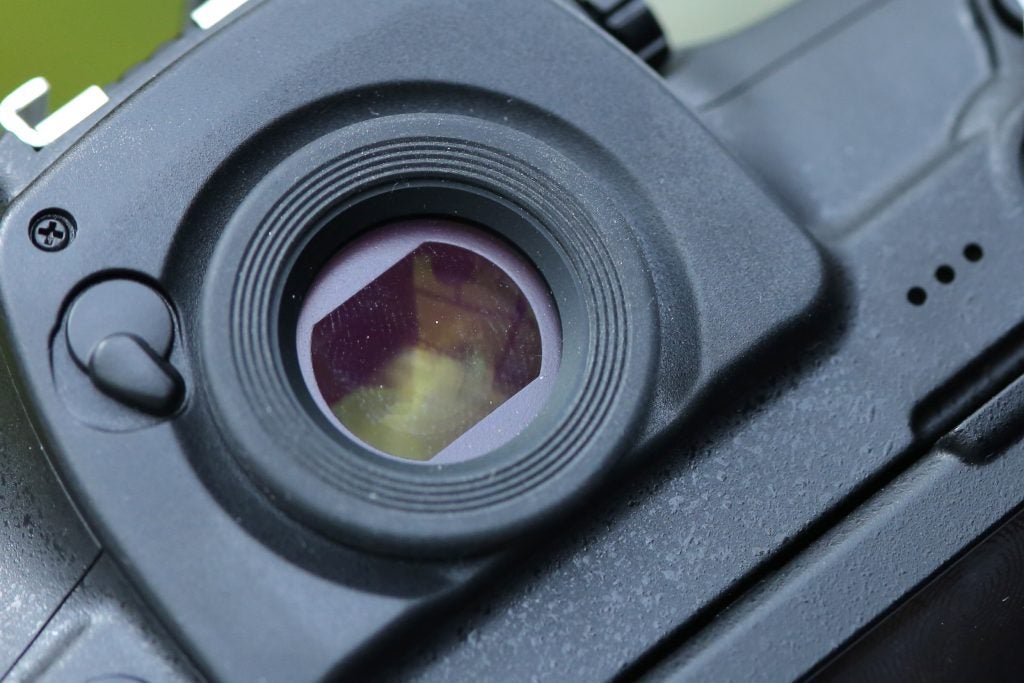
The viewfinder is equally impressive. Obviously, being an optical viewfinder, it doesn’t offer a preview of white balance, exposure or depth of field in the way of an electronic viewfinder, but with its 0.75x magnification and 100% frame coverage it offers a very pleasing view when raised to the eye and an exact rendition of what you see with the naked eye.
It’s possible to turn on a viewfinder grid display, and I found myself assigning the Fn1 button to viewfinder virtual horizon, which loads a helpful levelling guide on the horizontal and vertical axis to avoid skewed shots. Being an optical viewfinder, there is zero lag. There is also an incredibly short blackout time, and there’s the option to block out the viewfinder to prevent any light leak problems during long exposures.
Nikon D850 – Autofocus
Nikon’s pro DSLRs have a reputation for fast and accurate focusing, and the D850 is no exception, using the same Multi-CAM 20K autofocus sensor module seen in Nikon’s flagship D5. It can be relied upon to acquire focus faster than you thought possible, though this will depend on the lens used and the speed of its internal AF motors.
The autofocus is most impressive in very poor lighting conditions. Dimly lit dance floors at wedding venues and low-light wildlife shots are just a couple of examples where I found the capabilities of the Nikon D850’s autofocus system excelled my expectations.
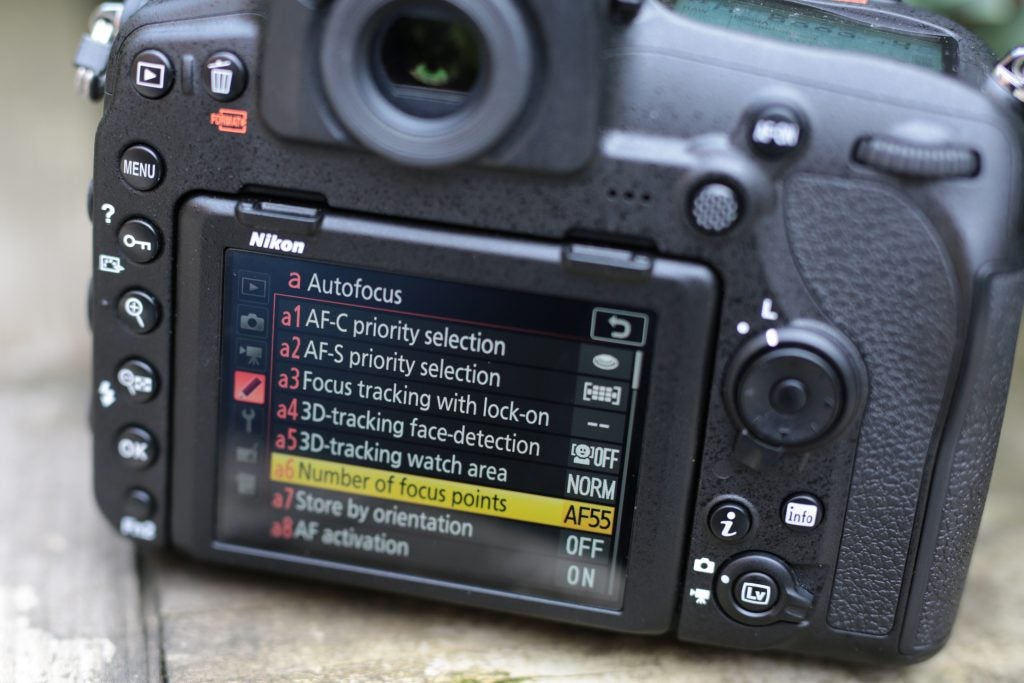
I experienced no difficultly at all tracking moving subjects travelling directly towards the camera, even in fading light. A quick fire burst of 18 frames at 7fps set to continuous AF (AF-C) of a train travelling towards the camera in excess of 60mph resulted in only three frames not being perfectly pin-sharp.
The D850’s 55 user-selectable points are more than the D810 provided, but they’re still grouped towards the centre of the frame, meaning there may be the odd occasion when your subject is positioned in an area of the frame where you need to focus first and then recompose.
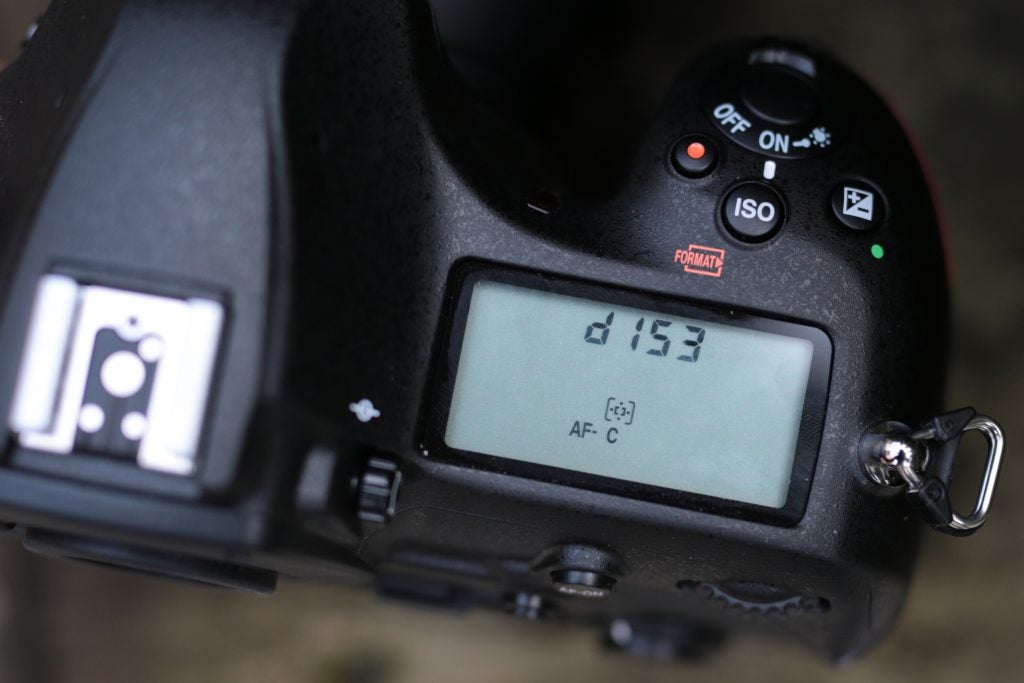
In similar way to other Nikon DSLRs, you change between single (AF-S) and continuous (AF-C) modes by pressing the AF button located inside the AF/MF switch and turning the rear dial. Holding down the button and turning the front dial controls the number of points in use in AF-C mode and is also used to select 3D AF tracking.
From the Autofocus custom setting menu you can refine AF settings to suit your way of shooting. For example, you can speed up or slow down the blocked shot AF response, and tell the camera whether you’re shooting an erratic or steady-moving subject from the Focus tracking with lock-on settings. Users are given the option to reduce the number of selectable AF points from 55 to 15, and back button focusing is easy enough to setup from the AF activation sub menu.
Nikon D850 – Performance
Being such a versatile camera, I found myself shooting a wide range of subjects in many different environments to find out how the D850 performs. First, I used the camera to shoot a series of landscapes and quickly found myself blown away by the astonishing detail the sensor resolves.
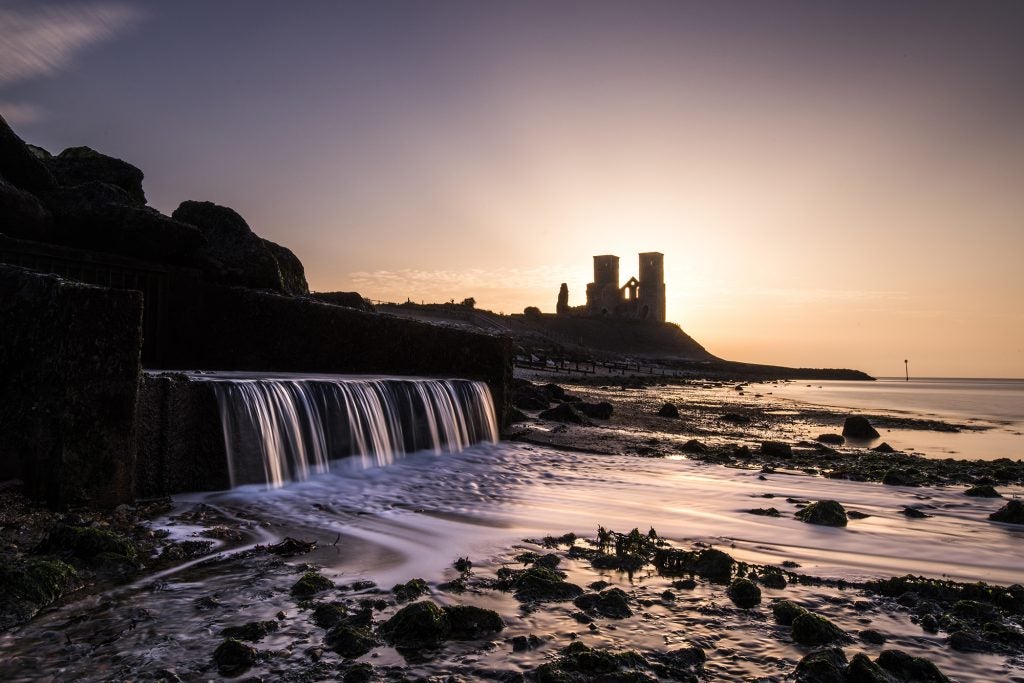
The marriage of high resolution, fast focus speed and tilt-angle screen allowed me to capture shots bursting with detail from low-angles, and far more easily than any previous high resolution DSLR Nikon has produced.
The crystal-clear rear display, with its responsive touch control and accurate colour rendition, is excellent for monitoring results. I regularly used the double-tap function combined with the rear dial to quickly zoom into 100% and check focus between shots. Even if you’re not overly keen on the idea of using a touchscreen on a DSLR, the D850’s is so good you’re likely to use it more than you think, especially to navigate the menu.
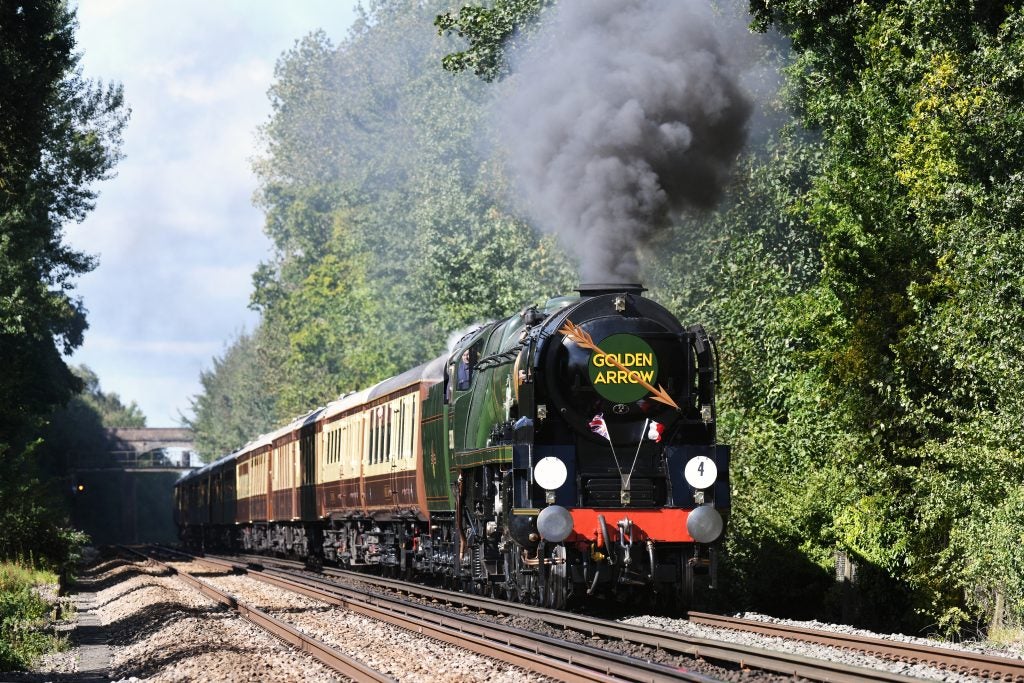
Nikon 200-400mm f/4 G VR II AF-S ED, 1/640sec at f/5.6, ISO 400
Testing the D850 at a wedding produced a pleasing set of results with two of my favourite Sigma Art lenses – the 24-35mm f/2 DG HSM Art and 135mm f/1.8 DG HSM. The true test was its silent Live View mode, where I opted for Mode 1 ahead of Mode 2 to prioritise resolution ahead of speed.
While it’s great that the D850 can capture shots without trace of a sound, you’re still totally reliant on contrast-detection for autofocus in Live View, both when shooting stills and video. This is where the D850 does lose out to some of its more recent mirrorless rivals. I did find myself missing a few key shots where the D850 struggled to lock on fast enough, at which point I reverted to phase-detection focusing and composing via the viewfinder at the cost of louder operation.

Nikon 85mm f/1.4 G AF-S, 1/100sec at f/1.4, ISO 1600
The D850 can’t quite reach the heights of Canon’s EOS 5D Mark IV, which benefits from on-chip phase detection in Live View thanks to its Dual Pixel AF technology. However, the disadvantage of the Canon EOS 5D Mark IV is that it doesn’t offer a completely silent shooting mode in Live View like the D850. If you extend the list of possible rivals to mirrorless cameras, though, you have to include the excellent Sony A7R III and Nikon’s own Z7. There are times when a mirrorless camera is better suited to the subject and the conditions than a DSLR.
To test the D850’s speed capabilities I used it on a car shoot – hanging out the back of a car to get a series of action shots. Without the MB-D18 grip and EN-EL18 high-power battery I was limited to shooting at 7fps, but the AF system proved more than capable of tracking the car, delivering pin-sharp results frame after frame.
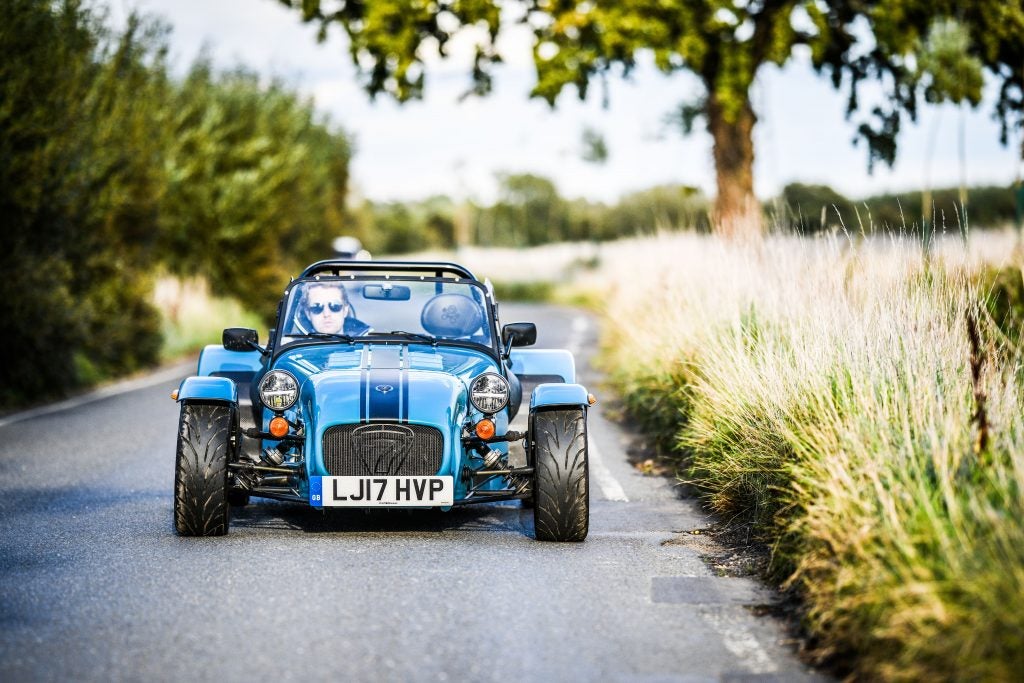
Sigma 135mm f/1.8 DG HSM, 1/4000sec at f/2, ISO 400
However, I did notice that shooting in Raw and Fine JPEG formats at full resolution only gave me around 400 shots or so to play with using a SanDisk Extreme Pro 64GB card. If you’re going to shoot at the highest quality at the highest speed on the D850 then you’ll not only need a few high-capacity cards, you’ll need carefully check card specifications and speed ratings before you buy – or bite the bullet and invest in the relatively new and untried XQD format.
I managed to shoot 20 continuous frames (Raw and Fine JPEG) at full resolution at 7fps to my card before the buffer was reached. To get anywhere close to the promised 51-frame raw buffer – and reach the full potential of the D850’s speed capabilities – you will need to use the fastest UHS-II SD cards or XQD cards.
Just as my time with the camera came to an end, I managed to source a Sony 64GB XQD card. In real-world use I found I was recording around 40 (14-bit lossless compressed) Raw files at 7fps before its buffer was reached. This is an impressive number considering the vast volume of data it was being asked to process and write. Formatting the card and switching to 12-bit lossless compressed Raw saw the number of continuously recorded frames increase to 107 at 7fps.
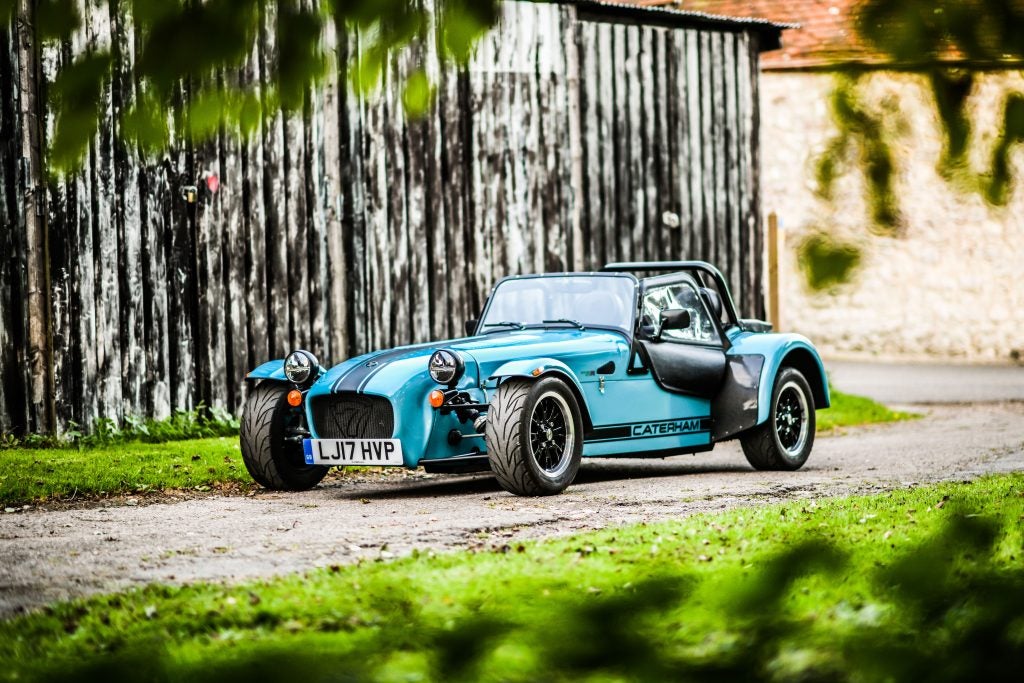
Nikon 85mm f/1.4 G AF-S, 1/250sec at f/1.4, ISO 400
Nikon’s Snapseed system has developed a reputation for being troublesome. I found the camera would automatically pair and connect to my iPhone via Bluetooth without issue. However, it wouldn’t always send my latest shots to my mobile device straight away when the auto-link within the app was clearly switched on. It seemed completely random as to when new photos would be transferred from the camera.
To overcome this I ended up using the Download Selected Pictures option, which initiates a Wi-Fi connection with the camera. Then, I manually selected the images I wanted to wirelessly transfer to my camera roll before sharing. Having the option to select the shots you’d like to import at 2MB or full resolution is great in this part of the app, but overall I was left with the impression that SnapBridge could be made more intuitive to use.
The fact it doesn’t offer the option to change exposure settings live in Remote Shooting mode also puts it way behind other apps from rival manufacturers.
Nikon D850 – Video
The D850 is capable of producing excellent movie footage in the hands of a pro videographer. It offers in-camera 4K UHD recording (3840 x 2160) at 30fps and Full HD (1920 x 1080) at up to 60fps for a maximum record time of 29mins 59secs. This is not exceptional by today’s standards, since the APS-C format Fujifilm X-T3, for example, can record 10-bit 4K video internally at 60fps, but this is the exception rather than the rule, and the D850’s video capabilities are still broadly on a par with its rivals.
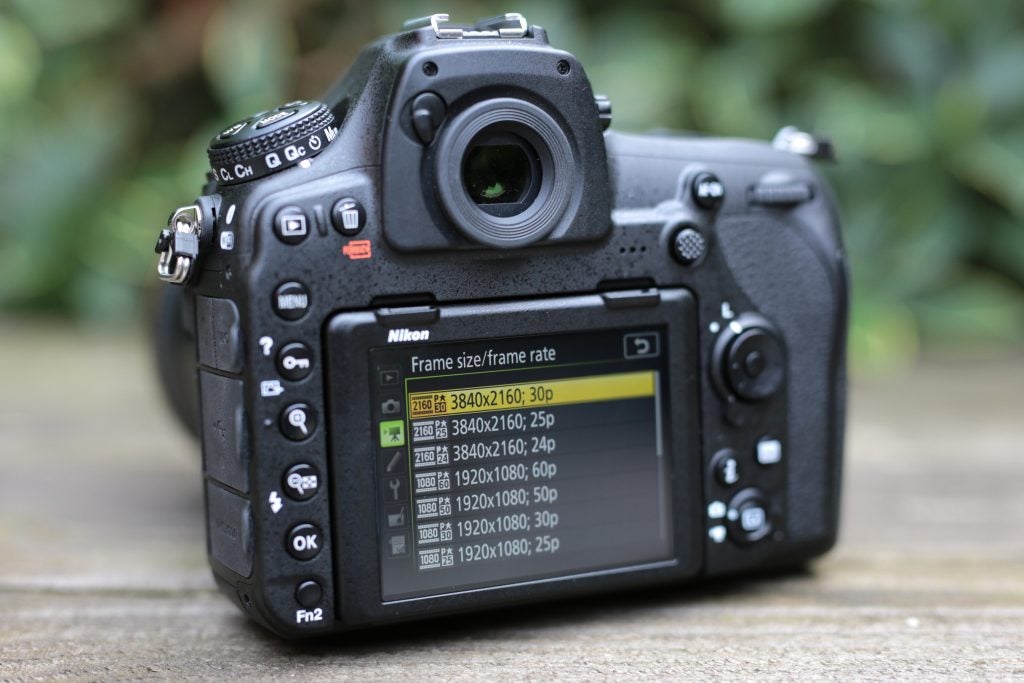
For cinematographers, the feature that sets the D850 apart from others is its 4K and 8K time-lapse capabilities. The time-lapse movie and intervalometer settings are easy to understand, too, offering advanced options such as being able to turn on silent shooting and exposure smoothing.
Once you’ve setup the interval and shooting time, you get a visual of how much space the time-lapse is going to take up on your SD or XQD card, as well as the indicated length of the time-lapse once complete. It’s simply a matter of hitting start to commence a 4K time-lapse. However, it’s worth noting that those who’d like to generate an 8K time-lapse will need to shoot in Raw and run the files through a third-party program since this can’t be done in-camera.
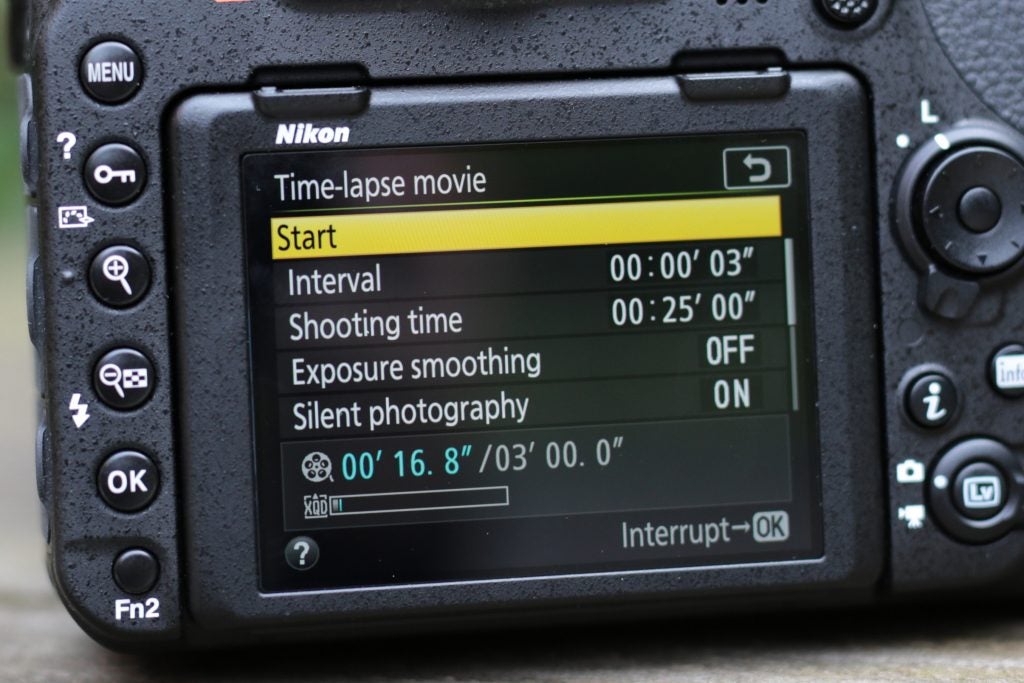
Creating high-resolution time-lapse footage is rather draining on the battery, so the MB-D18 grip and EN-EL18 high-power battery are recommended if you’re going to use this functionality regularly.
Nikon D850 – Image quality
The increase to 45.7 megapixels sees the D850 yield a slightly higher resolution than 42.4-megapixel Exmor R CMOS sensor found in the Sony A7R II, but it isn’t quite as high as the 50.6-megapixel resolution offered by Canon’s EOS 5DS and EOS 5DS R twins. The advantage of the Canon models is purely theoretical, however. With its lack of optical low-pass filter, the D850’s sensor produces a sensational level of detail, with great scope for cropping and maintaining high resolution when required.
Despite the sensor being densely packed with pixels, it offers wide dynamic range leverage and allows users to extract a high level of shadow detail from Raw files with minimal noise. This is where the D850 does seem to offer a significant advantage over the newer Nikon Z7, which can produce faint but visible banding in shadow areas in the same conditions.
Pushing the D850’s sensitivity to its extremes reveals that ISO 6400 is usable, and the same can be said for ISO 12,800, with the application of a little carefully-judge noise reduction in the processing/editing stage.
Resolution
The D850 resolves such a high level of detail that it was necessary to shoot our resolution chart from double the distance to determine our results. The sensor resolves 4800l/ph at ISO 100 – a sensational figure that it manages to maintain up to ISO 400. Beyond this point it drops a little to a very respectable 4400l/ph at ISO 800 and 4000l/ph at ISO 1600.
The sensor showed no problem resolving 3600l/ph at ISO 6400, with a slightly lower 3200l/ph figure being recorded at both ISO 12,800 and ISO 25,600. Detail starts to tail off more beyond this point as noise becomes ever more prevalent at higher sensitivity settings.
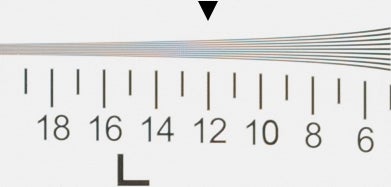
Nikon D850, Raw, ISO 100. Multiply the number below the line by 400 for the resolution in lines/picture height
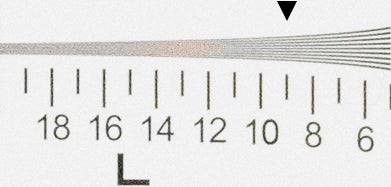
Nikon D850, Raw, ISO 6400. Multiply the number below the line by 400 for the resolution in lines/picture height
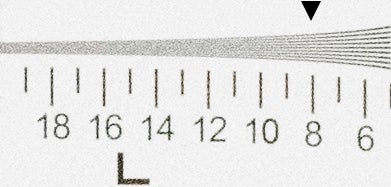
Nikon D850, Raw, ISO 25,600. Multiply the number below the line by 400 for the resolution in lines/picture height
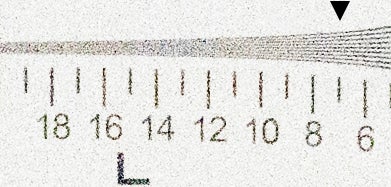
Nikon D850, Raw, ISO 102,400. Multiply the number below the line by 400 for the resolution in lines/picture height
Noise
To produce the best results at high ISO, you’ll want to shoot in Raw. However, I was left impressed by the in-camera processing that’s applied to the D850’s JPEG images, with fine detail being well preserved up to ISO 12,800.
A close examination of raw files revealed noise-free results between ISO 100-800, with trace luminance noise starting to creep in at ISO 1600. ISO 3200 and ISO 6400 are perfectly usable, and I wouldn’t fear pushing to ISO 12,800 – just beware that shots taken at this setting will require some noise reduction applied during processing.
I noticed a drop in saturation beginning at ISO 25,600, and noise becomes so imposing at ISO 51,200 and ISO 102,400 that you’ll want to avoid these settings at all costs. Whereas ISO 3200-6400 was the limit at which I’d want to shoot at with the D810, I wouldn’t be too fearful of pushing to ISO 12,800 on the D850 if there’s no other option.
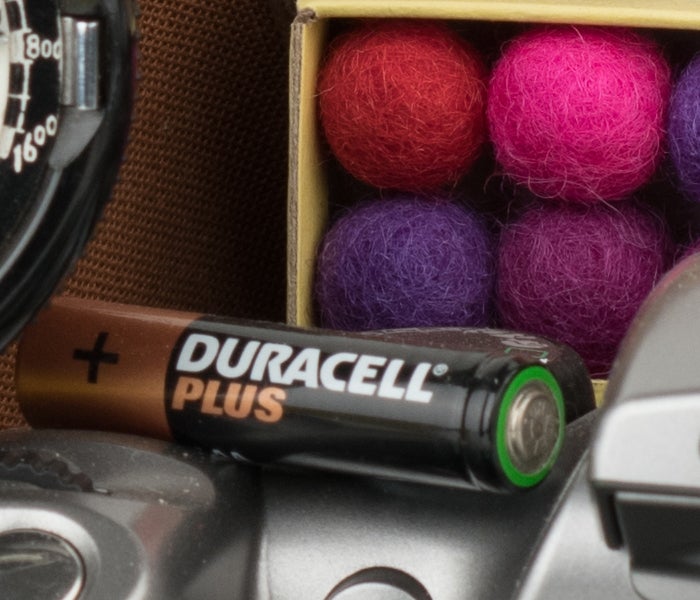
Nikon D850, Raw, ISO 100
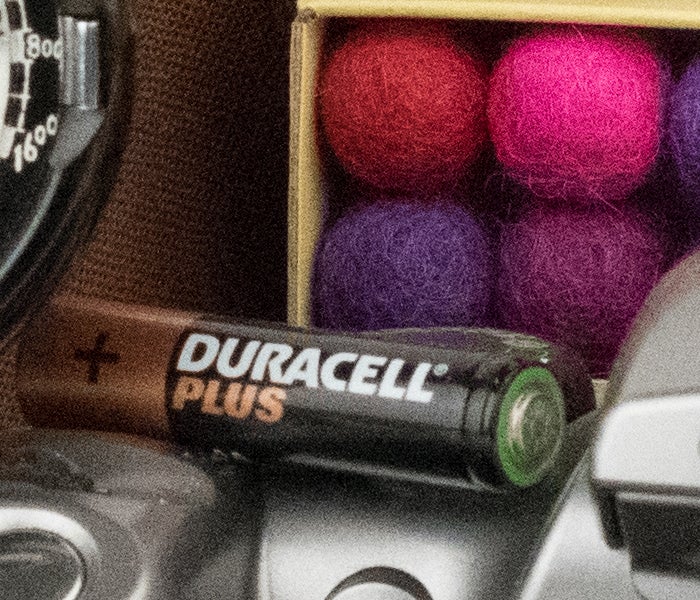
Nikon D850, Raw, ISO 6400
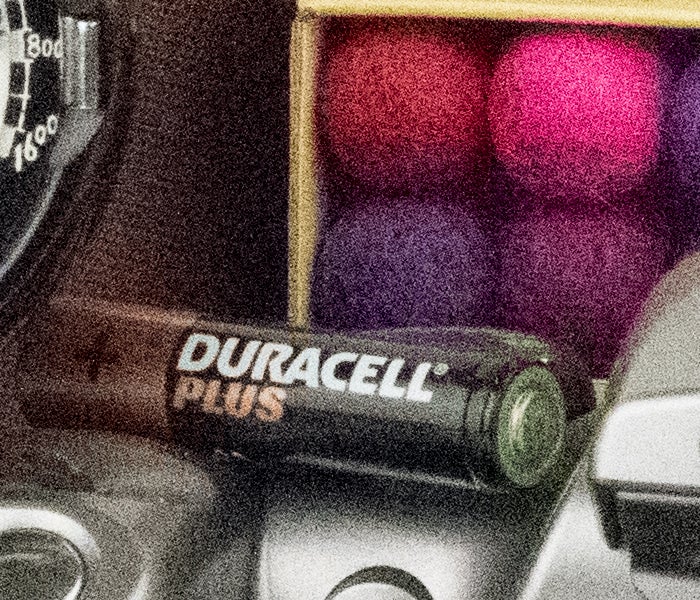
Nikon D850, Raw, ISO 25,600
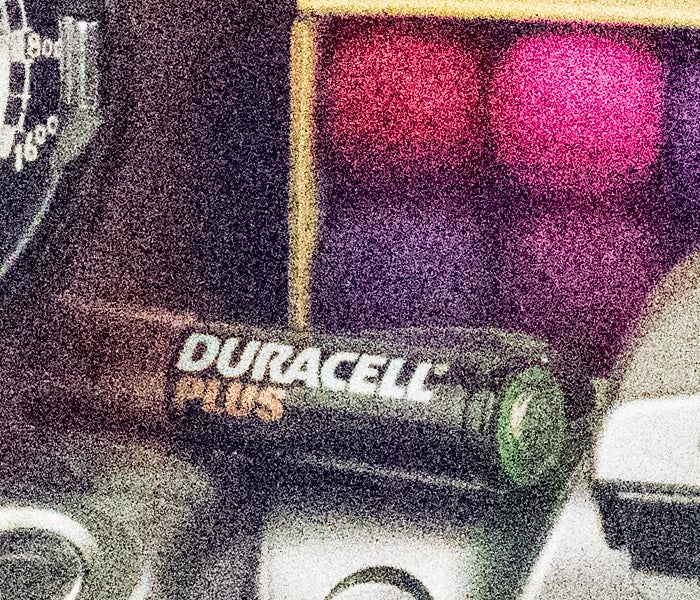
Nikon D850, Raw, ISO 102,400
Should you buy the Nikon D850?
Nikon users had a long three-year wait for a replacement to the mighty D810. Even during this time, it was hard to see what Nikon could actually do to improve on a camera that had become something of a modern classic. The great news is that the D850 doesn’t disappoint in the slightest, delivering more than perhaps any of us could have expected.
Professionals, semi-professionals and serious enthusiasts will be thunderstruck by the performance of the new 45.7-million-pixel full-frame (FX-format) CMOS sensor, particularly its low-light capabilities at high ISO. More than that, by successfully marrying high resolution with high speed, Nikon made the D850 arguably the most versatile DSLR on the market.
It’s true that 2018 has seen some major innovations in the full-frame mirrorless market from Canon, Nikon and Panasonic, and that the D850’s combination of speed and resolution is no longer unique, but by comparison the DSLR market has remained pretty static, and if you prefer DSLRs to mirrorless cameras – and many do – the D850’s landmark status is unchallenged, even now.
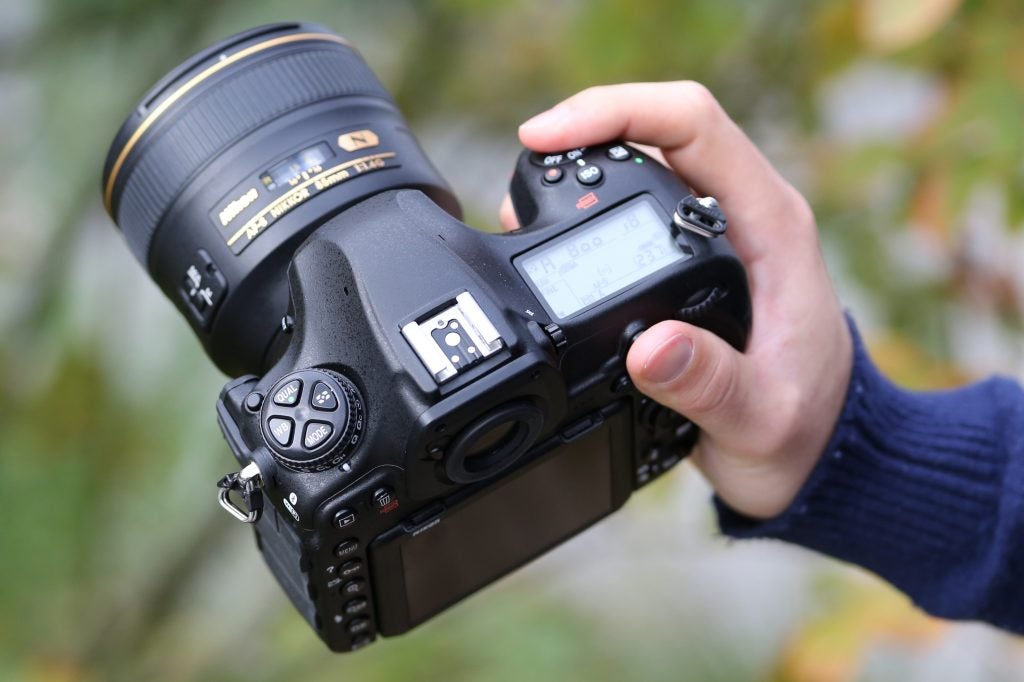
As far as Nikon users are concerned, the D850 changes one of the basic system setups. Until now, you’d need a D810, say, for high-resolution shooting, and a D500 (or a D5) for fast action work. The D850 offers both in a single body – though you will need the MB-D18 battery grip and an EN-EL18 battery to achieve that 9fps continuous shooting speed.
It’s not just the speed and the way the Nikon D850 is capable of processing such high volumes of data so quickly that impresses, either, as the AF response is as good as you get on the flagship Nikon D5. It’s insanely accurate and responsive, even when challenged with the fastest subjects and poorest of lighting conditions.
In fairness, there are other arguments for carrying two bodies, such as being able to switch from one lens/setup to another in an instant. Real-life events tend to unfold at their own speed and won’t wait while you swap lenses.
The D850 is not perfect, of course. The tilting touchscreen is great, but is limited to a single axis of movement and does not offer touch control of key exposure settings. The contrast-based Live View AF is slower than the on-sensor phase detection systems of rival cameras (and the newer Nikon Z 7) and the Snapbridge wireless connectivity proved somewhat unpredictable and unreliable.
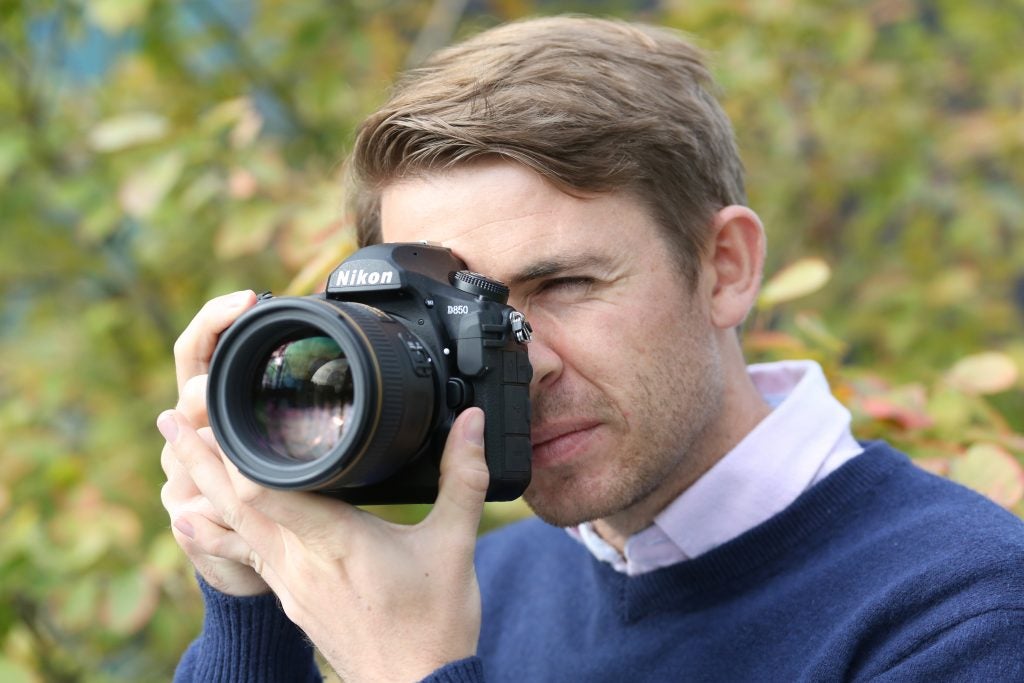
None of these points make any serious dent in the D850’s appeal, though. It’s an absolutely sensational camera that is as impressive now as when it was first launched. And if mirrorless cameras do indeed take over the world, the D850 will surely represent the high water mark of digital SLR design.
After a few tough years Nikon appears to finally be back on track with one of the finest and most versatile DSLRs ever made.
Verdict
The Nikon D850 offers a staggering blend of resolution, speed, performance and image quality. It’s a truly stunning camera, especially for those who prefer DSLRs (and their battery lives) to mirrorless cameras.


